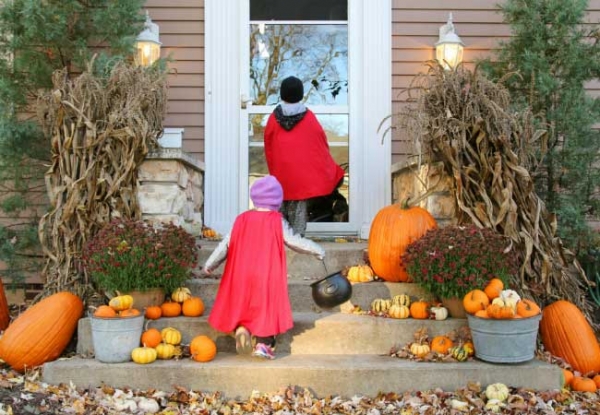
No other time during the year is a knock on the front door from a total stranger, disguised in a costume no less, welcome, as he asks for treats – except on Halloween. Though trick-or-treating has a kid-centric focus (what child doesn’t like candy and costumes?), harvesting sweets by going door to door has become a custom observed nationwide and in many other countries as well by both the young and mature alike (what grown up doesn’t like candy and costumes?). But what many don’t realize is that trick-or-treating is a relatively new custom. It’s only about 100 years old.
Trick-or-treating has its roots in both a pre-Christian Celtic tradition called Samhain, and in the Christian celebration of All Saint’s Day. The Celts, who lived 2,000 years ago in what is now Ireland, the United Kingdom and northern France, believed the dead returned to earth on Samhain, which was celebrated on the night of October 31. It is thought that people would gather to light bonfires, offer sacrifices and pay respects to the dead.
During these celebrations, villagers disguised themselves in costumes to drive away phantom ghosts, and laid food out on banquet tables to pacify unwelcome spirits. The ritual later evolved to include dressing up as dark creatures and performing antics in exchange for food and drink. Mumming, as this custom was known, is thought to be the antecedent for trick-or-treating.
Christianity had spread into Celtic lands by the ninth century. Celebrations in England of All Saint’s Day, a time of honoring Christians martyred for their faith, resembled Celtic commemorations of Samhain, where poor people would visit the houses of wealthier families and receive pastries called soul cakes in exchange for a promise to pray for the souls of the homeowners’ dead relatives. This practice, known as souling, was later adopted by children who went door to door asking for gifts such as food, money and ale.
In Scotland and Ireland, young people took part in a similar tradition called guising, where they dressed up in costume and accepted offerings from various households. But rather than praying for the dead, they would sing a song, recite a poem, tell a joke or perform tricks before collecting their treat, which back then consisted of a healthier variety like fruits and nuts.
Trick-or-treating and other Halloween customs were brought to North America by waves of Irish Immigrants fleeing famines in the early 1900s. But trick-or-treating didn’t reach mass popularity until late 1950s. Once it did, candy companies and costume manufacturers capitalized on the lucrative tradition, expanding the selection of disguises for kids and adults beyond monsters to include everything from cartoon heroes to celebrities. Today, Americans spend an estimated $6 billion preparing for Halloween customs like trick-or-treating, making it the nation’s second-largest commercial holiday.
As our culture continues to evolve, so will our holiday festivities. We’ll probably never go back to the days of poem recitations in exchange for walnuts and grapes, but the creative aspects of those traditions of yore sound like so much fun. So what if this Halloween, before we head out to knock on our neighbors’ doors, we choreograph our own Halloween dances or make up a little ditty to honor those old traditions in our own creative ways?